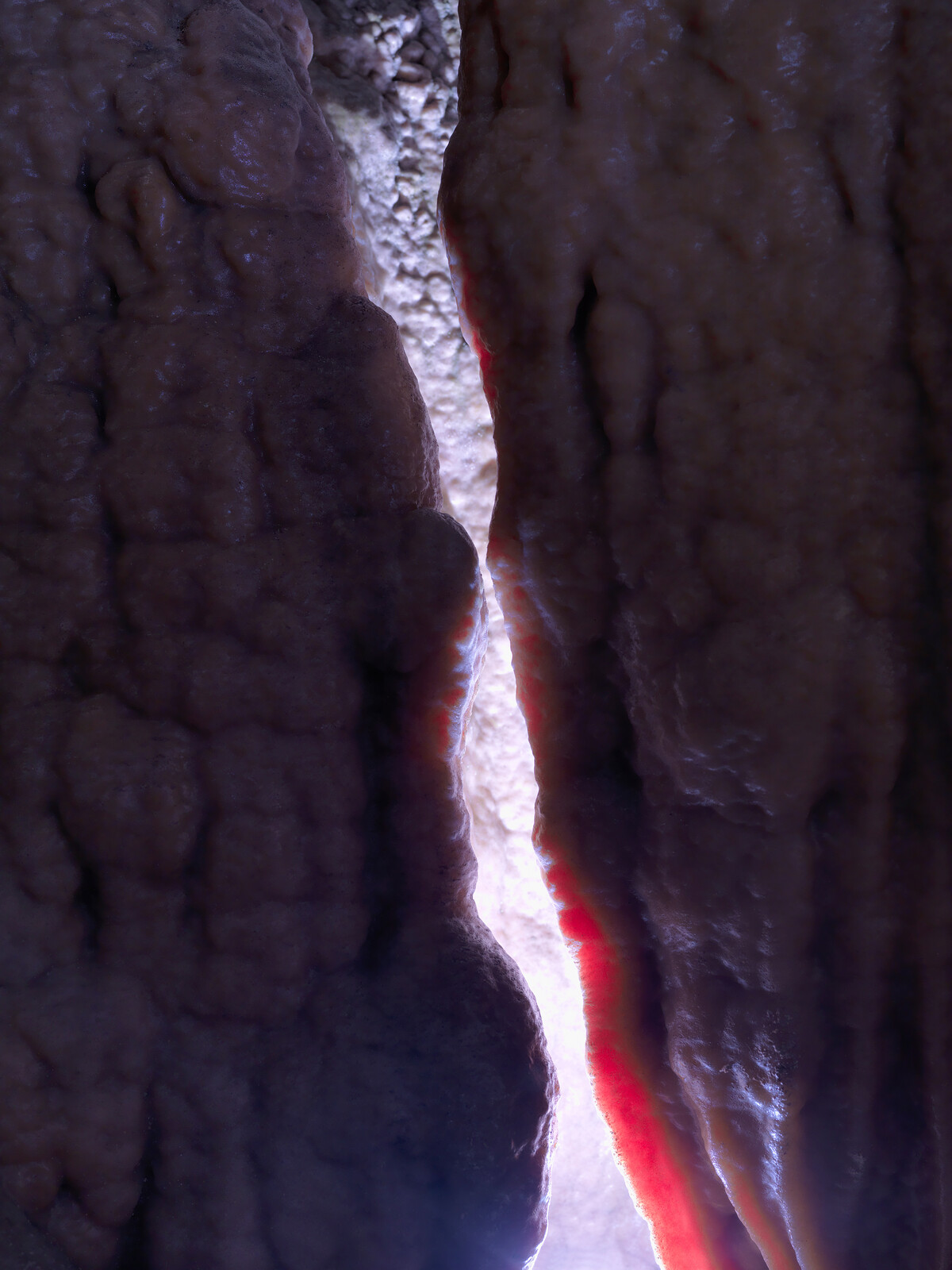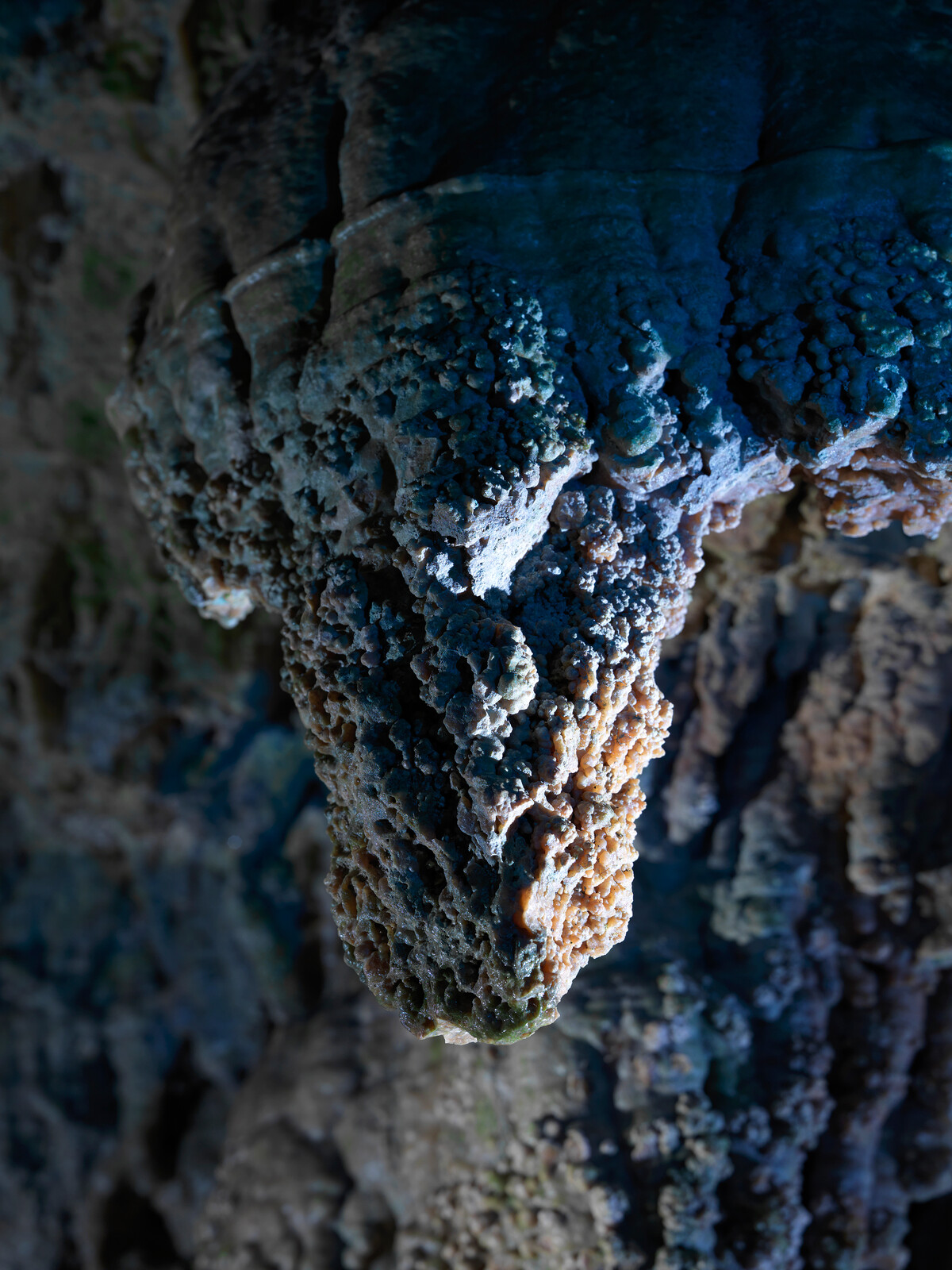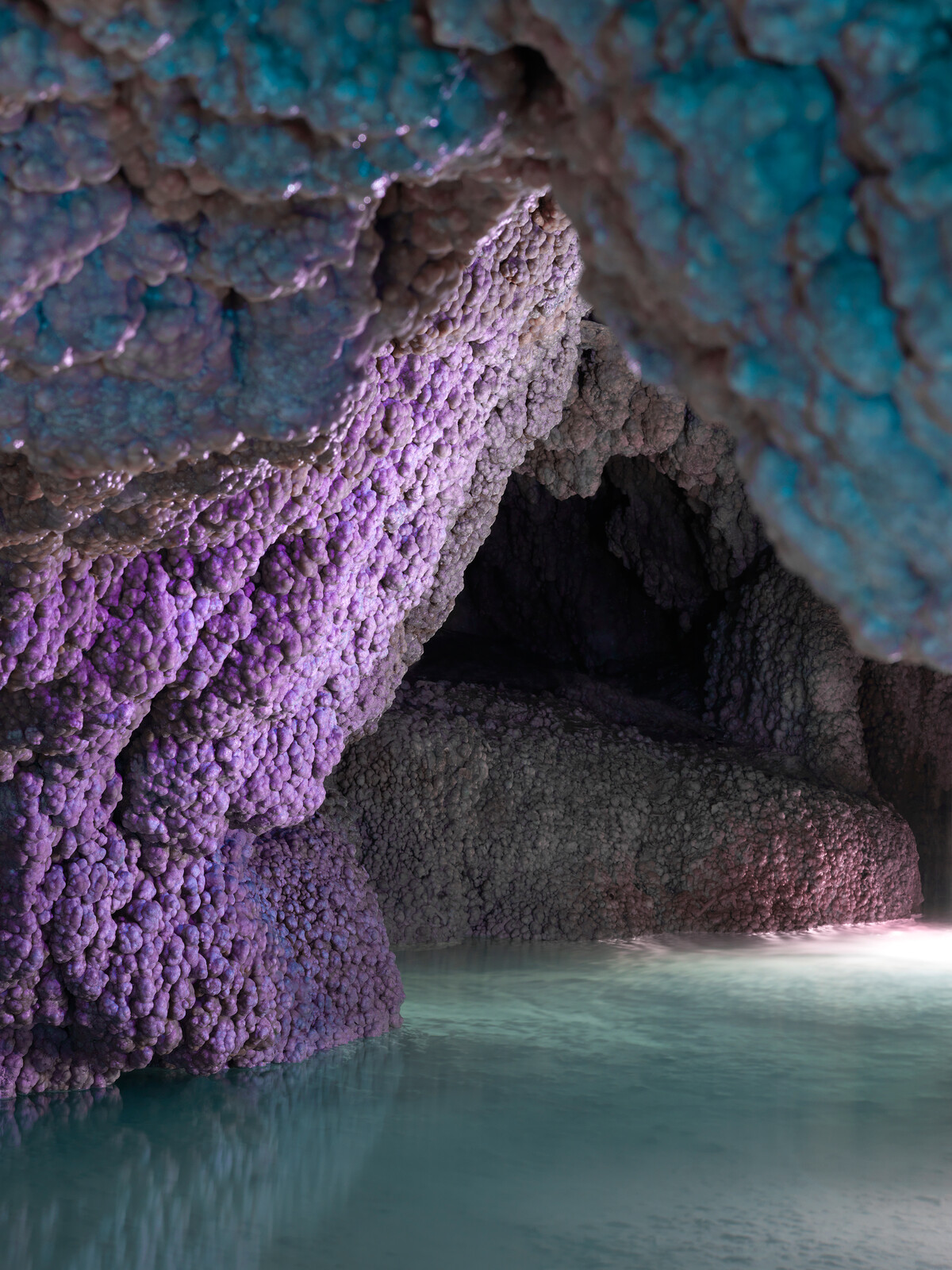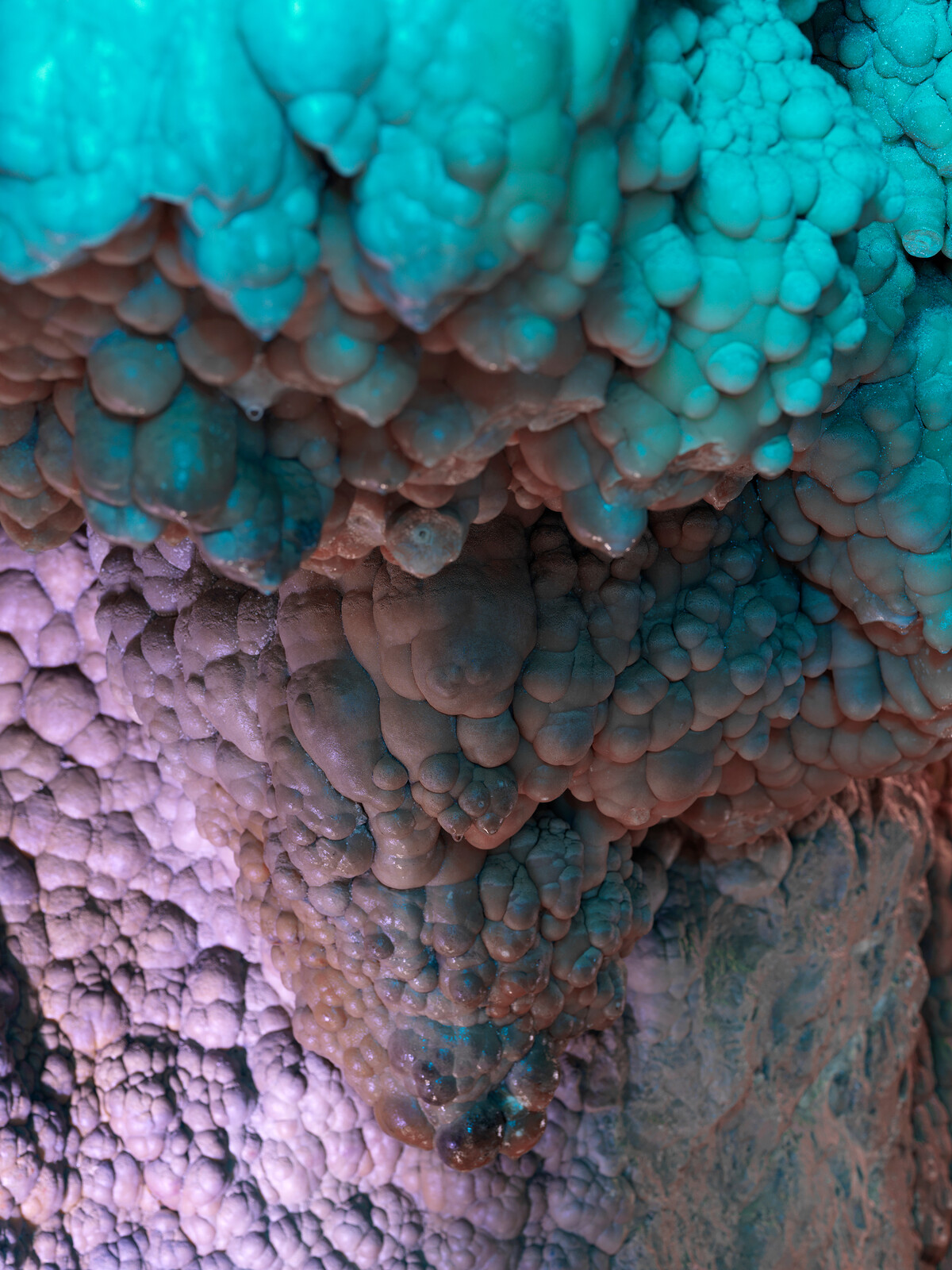we are open from March 29th 2024
The Höllgrotten caves have already 3000 years of history to tell
Learn more about the geology of the caves, the history of discovery or study the cave plan of the accessible caves.

Caves
«Young caves»
The Höllgrotten caves are unlike any other dripstone cave in the world. While other grottos were carved from solid rock by underground watercourses in a process lasting millions of years, the Höllgrotten caves were formed on the surface over a comparatively short period of about 3,000 years, making them relatively “young”.
Bring down the curtain
The Lorze ravine was formed by glacial meltwater released from the Ägeri valley when the last Ice Age came to a close about 18,000 years ago. Having drained into the Neugrund moors in Menzingen, 4.5 km above the cave site, the water leached large amounts of calcium carbonate from the surrounding rock in the course of its ten-year underground journey before rising in great springs from the flanks of the Tobel at the spot where the Höllgrotten caves now stand. As the emerging calcareous springwater ran off on the surface it deposited large volumes of calcium carbonate around the mountainside, forming in the period between 8,500 and 5,500 years ago a gigantic mass of spring tufa about 30m high, 50m deep and 200m long.
Where strongly calcareous springwater rises to the surface, clumps of moss, ferns, twigs, leaves and sand calcify to form spring tufa, a so-called speleothem or secondary mineral.
The mass of tufa continued to expand along the bed of the Lorze, causing the stream to flow underneath its leading edge and form niche-like hollows and overhanging ledges. A void was created by falling rocks when the formation collapsed at a point close to the modern-day cave exit and the remainder of the caves were then slowly enclosed: curtains of roots and moss propagated by the emerging springwater quickly grew and calcified, forming dripstone caves in the spaces created behind the screen of tufa.

History
Discovered thanks to the railways
Light, porous and easy to cut, the tufa deposited in the Lorze ravine was quarried in the 19th century for construction projects such as the cladding for the Bonstetten railway tunnel in Knonaueramt. Access to the first grotto, which had been discovered in the course of quarrying in 1863, was hampered by the presence of underground lakes. Tufa quarrying was fortunately halted in 1885 to preserve the grottos and in the same year, Ständerat (Councillor) Josef Leonz Schmid, whose father had discovered the caves, ordered the construction of an adit to drain the cave lakes into the Lorze. The Höllgrotten caves have been open to the public since 1887 and further sections of the grottos were discovered in 1892 and 1902. Josef Schmid purchased neighbouring plots of land to ensure he would be able to link up all the grottos and preserve the cave system for posterity. In 1917, a man-made shaft was excavated to link the lower caves with the upper grottos, 40m (130ft) above, and it is now possible to walk through the entire Höllgrotten cave system from beginning to end.
Trust
The Höllgrotten Caves Family Trust was established in 1942 by Dr. Rudolph Schmid from Baar and Dr. Walter Schmid from Arbon, grandsons of the original discoverer of the caves. The purpose of the trust is to look after the Höllgrotten caves, the restaurant and the surrounding land as the joint property of the Schmid family. The following are currently members of the board of trustees: Thomas Schmid, from Zug (chairman), Dr. Ivo Schmid, from Arbon, and Martin Schmid from Lucerne. The trust’s CEO is Heini Schmid from Baar.

Discovery
From prehistoric rivers
The deeper geological strata in the Zug area are composed of sand and marl – material eroded from the nascent Alps and sluiced to their foothills by prehistoric rivers – and these belts of solid rock, known as “molasse”, are covered by layers of sediment and scree that were transported and deposited by glaciers in an earlier period of the Ice Age. The carbonic acid in the rainwater leached calcium carbonate from the calcareous layer of gravel as it percolated down to the molasse; this impermeable layer forced the calcium carbonate-laden rainwater to run off down the walls of the Lorze ravine and the calcium carbonate was deposited as tufa. Over time, an overhanging curtain was formed, enclosing voids of varying sizes. The entire tufa formation belongs to the Holocene, the current geological epoch, and was probably created some 5-10,000 years ago.
A steady drip can form a stone
The calcium carbonate deposited by the water droplets conglomerated to create an infinite variety of formations, the best-known of which are stalactites and stalagmites. As calcareous water drips from cracks in the ceiling it releases carbon dioxide, which promotes the formation of seed crystals of calcite; these follow the surface of the waterdrop back to the ceiling, where they adhere, and this is the first step in the growth of a “straw” stalactite. As more water flows down the straw’s exterior, further calcite is deposited and its walls continue to thicken, becoming less fragile and eventually turning into a full stalactite. Water dripping from the end of the stalactite also releases calcite as it hits the ground and this is deposited to form stalagmites, “candle-like” structures which can grow to heights of many metres, although they form more slowly than stalactites.

Geology
Cave map for Download
For scouts, spelunkers and anyone else who wants to immerse themselves in the details: a downloadable map of the Höllgrotten caves (in German).
